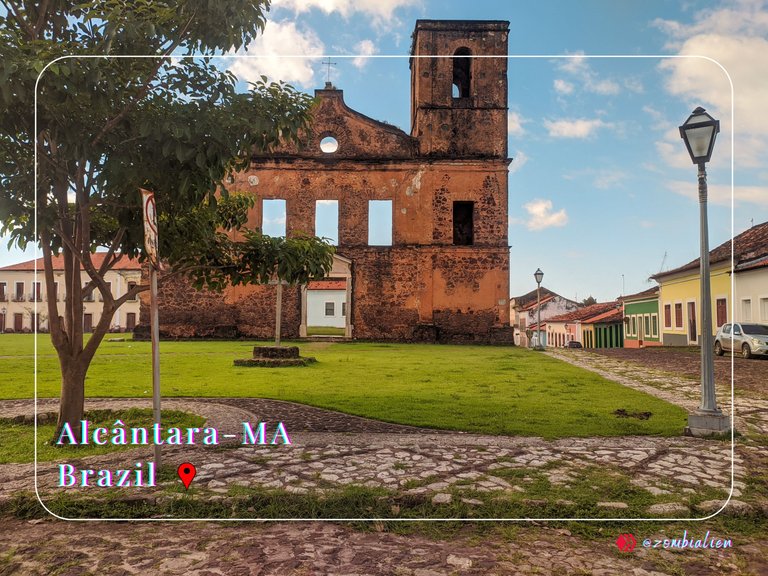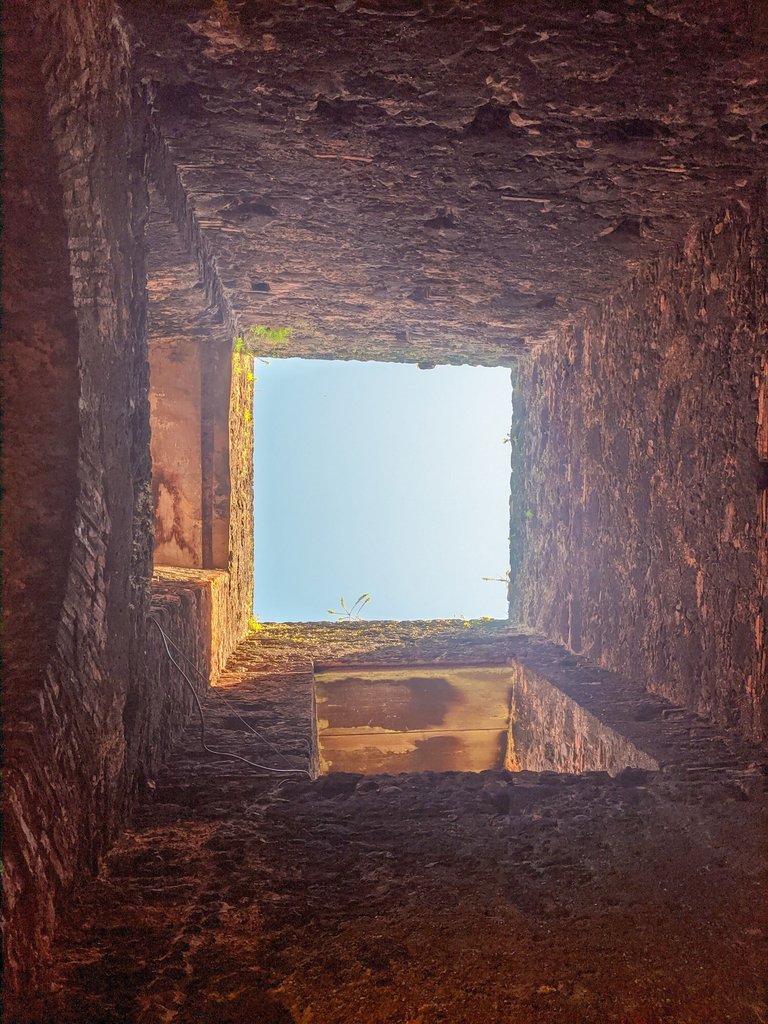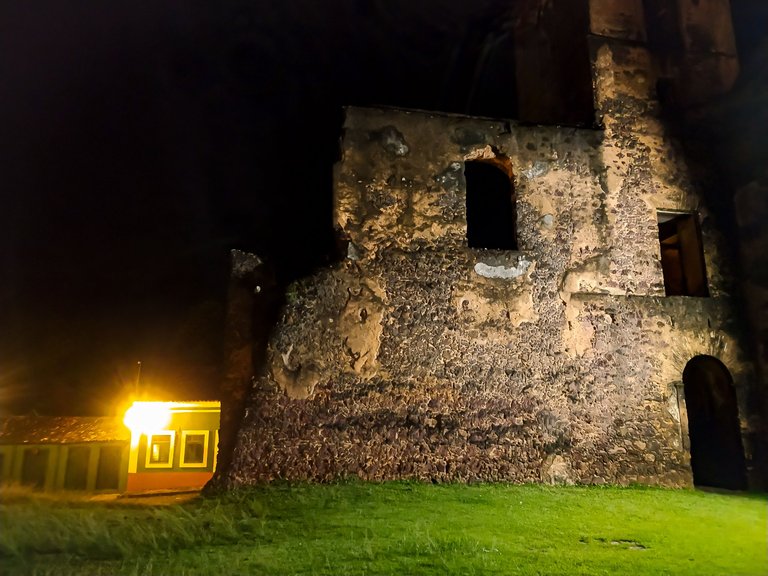
Greetings, Hive friends! I hope everyone is doing great.
Continuing the Northeastern Brazil trips series, this time I'll talk about the trip I made to Maranhão state. Initially, I didn’t intend to turn this into a series, but, well, I found myself really enjoying the concept, heh. So let's get it.
When one talks about Maranhão, the first thing that pops into our minds are the Lençóis Maranhenses – the stunning cinematic white dunes and blue lagoons – however, there are plenty of other places that also deserve attention. One of these hidden gems is "Alcântara", a small, charming colonial city, located approximately 30 km from "São Luís", Maranhão's capital city. Though the distance is relatively short, getting there involves a boat trip that can take about 1 to 1.5 hours, depending on the weather. There are usually only 2 or 3 crossings per day due to the tides and they occur in the early morning. Because of this, tickets sell out fast – I ended up losing a night's accommodation because I couldn't get to the city on the day I had planned.
Versión en español
¡Saludos, amigos de Hive! Espero que todos estén muy bien.
Continuando con la serie de viajes al nordeste de Brasil, esta vez hablaré del viaje que hice al estado de Maranhão. Inicialmente, no tenía la intención de convertir esto en una serie, pero, bueno, acabé gustando mucho del concepto, jeje. Así que dale.
Cuando se habla de Maranhão, lo primero que nos viene a la mente son los Lençóis Maranhenses – las impresionantes y cinematográficas dunas blancas y lagunas azules – sin embargo, hay muchos otros lugares que también merecen atención. Una de estas joyas ocultas es "Alcântara", una pequeña y encantadora ciudad colonial, situada a unos 30 km de "São Luís", la capital de Maranhão. Aunque la distancia es relativamente corta, llegar hasta allí implica un viaje en barco que puede durar entre 1 y 1.5 horas, dependiendo del clima. Normalmente sólo hay 2 ó 3 travesías al día, debido a las mareas, y se realizan por la mañana temprano. Por eso, los billetes se agotan rápido – yo acabé perdiendo una noche de alojamiento por no poder llegar a la ciudad el día que había planeado.

Praia Grande pier, São Luís: this is where you take the boat to Alcântara
Another thing I often see on travel blogs is the fact that most people take day trips to Alcântara. Personally, I think it's a waste of time – in the sense that you don't get to enjoy things the way they should be. Is there anything better than getting to know a place by talking with the locals? So why shorten your trip to just a couple of hours, especially in a place like this? And believe me, even after spending more time there, there will still be so much left to discover or simply enjoy.
Versión en español
Otra cosa que veo con frecuencia en los blogs de viajes es que la mayoría de la gente hace viajes de un día a Alcântara. Personalmente, creo que es una pérdida de tiempo – en el sentido de que no disfrutas de las cosas como deben ser. ¿Hay algo mejor que conocer un lugar hablando con los lugareños? Entonces, ¿por qué acortar el viaje a un par de horas, sobre todo en un lugar como éste? Y créame, incluso después de pasar más tiempo allí, aún le quedará mucho por descubrir o simplemente disfrutar.

Alcântara's main square
Okay, let me contextualize a bit: Alcântara was first inhabited by the indigenous people called Tupinambá and then colonized by the Portuguese in the early 17th century. During the colonial period, the city became one of the wealthiest towns in Brazil, thanks to the cotton and sugarcane plantations and its strategic location. This attracted rich families who built the mansions and churches that are now the city's postcard. Well, it wasn't exactly these rich families who were directly responsible for this prosperity, but the enslaved Africans, as in other parts of Brazil – so much so that when slavery was abolished in the late 19th century, Alcântara's prosperity also collapsed.
Versión en español
Bien, déjame contextualizar un poco: Alcântara fue habitada primero por el pueblo indígena llamado Tupinambá y luego colonizada por los portugueses a principios del siglo XVII. Durante el periodo colonial, la ciudad se convirtió en una de las más ricas de Brasil, gracias a las plantaciones de algodón y caña de azúcar y a su ubicación estratégica. Esto atrajo a familias ricas que construyeron las mansiones e iglesias que hoy son la postal de la ciudad. Bueno, en realidad, no fueron exactamente estas familias ricas las responsables directas de esta prosperidad, sino los africanos esclavizados, como en otras partes de Brasil – tanto que cuando se abolió la esclavitud a finales del siglo XIX, la prosperidad de Alcântara también se vino abajo.


So, from the moment you set foot in the town, you're surrounded by remnants of a colonial past on all sides, it feels like you've stepped back in time. While it's possible to hire a guide to show you the historic buildings and share the city's history, I decided not to. Instead, I chose to explore on my own and just feel the town's vibe at my own pace. But, of course, even solo travelers like me are never 100% alone – I ended up making some friends to explore the city with.
Versión en español
Entonces, desde el momento en que pones un pie en la ciudad, estás rodeado de restos de un pasado colonial por todos lados, parece como si hubieras retrocedido en el tiempo. Aunque es posible contratar a un guía para que te muestre los edificios históricos y te cuente la historia de la ciudad, yo decidí no hacerlo. En cambio, opté por explorarla por mi cuenta y sentir el ambiente de la ciudad a mi propio ritmo. Pero, por supuesto, incluso los viajeros solitarios como yo nunca están solos al 100% – acabé haciendo algunos amigos con quienes exploré la ciudad.


The imposing church of São Matias

The city hall
One of the city's main tourist attractions is the Praça da Matriz (main square), home to the famous ruins of the church of São Matias. In 1808, when the Portuguese royal family moved to Rio de Janeiro, rumors spread that King D. João VI and his court might visit Alcântara. This created great excitement among the local elites, who ordered the construction of a grand church to impress the royalty. However, in the end, the court never visited, and the church was left unfinished – also because, a few years later, the city's economy also began to decline.
Versión en español
Una de las principales atracciones turísticas de la ciudad es la Praça da Matriz (plaza principal), donde se encuentran las famosas ruinas de la iglesia de São Matias. En 1808, cuando la familia real portuguesa se mudó a Rio de Janeiro, corrió el rumor de que el rey D. João VI y su corte podrían visitar Alcântara. Esto creó un gran entusiasmo entre las élites locales, que ordenaron la construcción de una gran iglesia para impresionar a la realeza. Sin embargo, al final, la corte nunca la visitó, y la iglesia quedó inacabada – también porque, pocos años después, la economía de la ciudad también empezó a decaer.


Inside the only tower of the church
It may sound strange, but the highlight of my first day in Alcântara was when I finally stopped walking around visiting the ruins and sat down for an ice cold beer with friends at a small bar at the main square. I got totally immersed in a conversation with the locals about the city's past, present and even UFO legends – well, in case you don't know, this peculiar city is also home to a rocket and satellite launch base, officially called Alcântara Space Center. It was chosen to host the space base because of its privileged geographical location near the Equator and the ocean. Interesting, isn't it?
Versión en español
Puede sonar extraño, pero lo mejor de mi primer día en Alcântara fue cuando por fin dejé de pasear visitando las ruinas y me senté a tomar una cerveza helada con unos amigos en un pequeño bar de la plaza principal. Me quedé totalmente absorta en una conversación con los lugareños sobre el pasado, el presente e incluso las leyendas sobre ovnis en la ciudad – por si no lo sabe, esta peculiar ciudad también alberga una base de lanzamiento de cohetes y satélites, llamada oficialmente Centro Espacial de Alcântara. Fue elegida para albergar la base espacial por su privilegiada situación geográfica, cerca del Ecuador y del océano. Interesante, ¿no?

The main square at night has another aura – I wish I had a better phone 😪
As I said, the immersion was an amazing way to get started in the city. Time really seemed to pass diferently there.
Have you ever been to Alcântara? Let's talk in the comments.
Thanks for reading! See ya! 🖖👽
All the photos were taken by me, with a Xiaomi Redmi Note 8 and edited with Canva and Lightroom.
Bzzz-rrr, @zombialien! Obrigada pelo relato aventureiro! Achei incrível as fotos das dunas brancas e lagos azuis de Alcântara. Obrigada por dividir sua história e queremos saber mais sobre essa aventura! Lagg-g-bzzz, espero aprender mais sobre esse local escondido! #hivebr
Obrigado por promover a comunidade Hive-BR em suas postagens.
Vamos seguir fortalecendo a Hive
Hello! Thank you very much for posting on the Worldmappin Community. We would like to remind you that one of the rules of our community is to pin your post to our map. This will give your post more reach, as well as have the chance to be featured in our daily Travel Digest 😃.
Quick guide on how to do it.
1 - Go to https://worldmappin.com
2 - Find the location of your publication on the map, you can do this by scrolling on the map or using the search bar.
3 - Click on the GET CODE button and then click on the exact location of your publication: a code snippet will be generated.
4 - Copy the code and paste it into the draft of your Hive post. Then publish it :)
The code will be invisible in your post, but a few minutes after publishing you will receive a comment informing you that your post has been added to the map.
We suggest you read all the rules of our community here.
For any other questions, don't hesitate to contact our team on our Discord channel.
Cheers!
Oops, now it's correct. Thank you!
Thanks for pinning it now @zombialien👍
Congratulations, your post has been added to WorldMapPin! 🎉
Did you know you have your own profile map?
And every post has their own map too!
Want to have your post on the map too?
Congratulations @zombialien! You have completed the following achievement on the Hive blockchain And have been rewarded with New badge(s)
Your next target is to reach 7000 upvotes.
You can view your badges on your board and compare yourself to others in the Ranking
If you no longer want to receive notifications, reply to this comment with the word
STOPCheck out our last posts:
Congratulations @zombialien! You received a personal badge!
You can view your badges on your board and compare yourself to others in the Ranking
Check out our last posts: